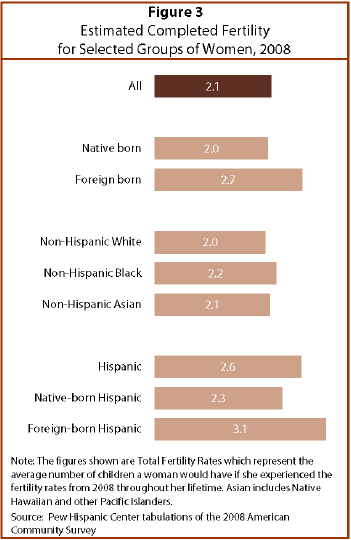
In 2009, immigrants—be they legal or unauthorized—comprised 12.8% of the total population of the United States and 15.7% of the total adult population. However, because of their youthful age structure and higher fertility rates, immigrant adults are more likely than native-born adults to be parents of children younger than 18. As a result, they are the parents of 23% of all children in this country ages 17 and younger. About 85% of these children of immigrants were born in the United States.

Unauthorized immigrant adults, in particular, skew young. The median age of all U.S.-born adults (ages 18 and older) in 2009 was 46.3 years. For legal immigrants, this figure was 45.9; for unauthorized immigrants, it was more than a decade younger—35.5, according to the Pew Hispanic estimates.
In addition, immigrant adults tend to have higher rates of fertility than do native-born adults. As of 2008, the total fertility rate among females ages 15 to 44 was 2.0 for the native born and 2.7 for immigrants.
Data limitations do not allow for an analysis in this report comparing the fertility rates of the unauthorized with those of legal immigrants.
However, the fertility patterns of other demographic groups are instructive. Overall, Hispanics who live in the U.S. have higher rates of fertility than do whites, blacks or Asians. And among Hispanics, the foreign born have higher rates of fertility than the native born (3.1 versus 2.3). About three-quarters of the nation’s unauthorized immigrant population is Hispanic, according to a 2009 Pew Hispanic report.2




